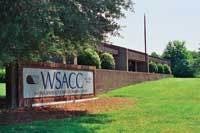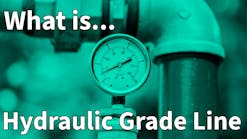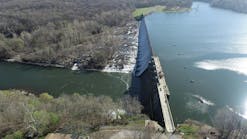The Water and Sewer Authority of Cabarrus County, NC, used a modeling program to substantially lower th cost of a proposed sewer interceptor project.
Click here to enlarge imageWSACC, like many other water authorities, uses external consultants for major planning projects, including Master Plans, and then undertakes the smaller projects using its own modeling skills.
The Authority has been a user of InfoWorks CS and InfoWorks WS for several years now. The level of activity undertaken in-house by WSACC on both collection and distribution systems can be handled by one modeler, so the fact that the interfaces of the two InfoWorks products are identical is beneficial. Since starting to use InfoWorks for modeling both collection and water supply systems, great progress has been made in completing the network modeling process.
An example of the value of maintaining a model for use in making infrastructure design decisions came recently when WSACC reviewed the capacity required to meet a projected increase in flows in its interceptor network. WSACC handles flows that originate in an adjacent county. It was evident that the projected flow from commercial areas - both a shopping mall and the nearby NASCAR racing circuit - raised questions about the capacity of the affected interceptor.
WSACC used the services of an engineering firm to design a parallel system for the existing 30 inch interceptor near the area in question. Flows were projected using the 2000 Master plan criteria for the years 2025 and 2050. The results produced were comparable with the flows in the 2002 Master Plan, and on this basis a new sewer line, parallel to the existing 30” line, was recommended.
WSACC had already modeled the relevant sections of the interceptor. Concerned about the very substantial investment involved, the engineering firm’s proposals were run through the model, which included the downstream part of the interceptor as it flowed to the treatment plant. The model was calibrated using existing flows and flow projections were estimated for the years 2025 and 2050.
The result of the analysis was that the size of the parallel line could be reduced by 1 to 2 pipe sizes, representing a considerable saving in capital expenditure over the earlier proposal.
“We keep our models up to date so that they can be used for frequent analysis of projects that our jurisdictions require,” said Bhavana Sinha, the modeler for WSACC. “We have also used the models enough to have confidence in their results. So when we received the recommendations from the consultants it was fairly straightforward to use the model for validating the recommendations. Because the capital expenditure proposed was high, it was worth spending enough time on this validation to ensure that our money was being spent effectively.
“In the end we came to a different result, proposing a much lower cost solution, and we had done enough work to be confident that we were correct in our analysis.”
Sinha said the savings could be “measured in the millions of dollars.”
“It was a classic example of one relatively simple project providing payback many times over for the cost of purchase of the modeling software plus the cost of building the models,” he said.



